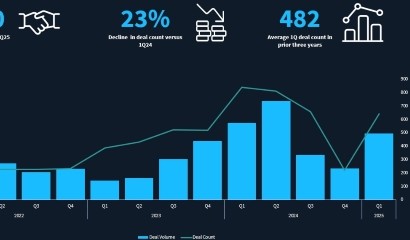Meet WeWork’s bankruptcy judge John Sherwood – Judge Profile
By Paul Gunther and Jayjeet Sharma
Recently, New Jersey has heated up as a jurisdiction for mega bankruptcy filings. In just this past year, three cases with over USD 1bn in assets and liabilities – Rite Aid, Cyxtera, and Bed Bath & Beyond Inc – have filed in the district.[1] Most recently, on 6 November, WeWork Inc, which is headquartered in New York City, filed a prearranged Chapter 11 case in New Jersey. Bankruptcy Judge John Sherwood has been assigned to oversee the case. In this article, the Debtwire legal analyst team reviews Judge Sherwood’s judicial career and how his past cases may have prepared him for the WeWork case.
Judge Sherwood was appointed to the bankruptcy bench in June 2015. According to a biography available on the website of the Turnaround Management Association, Judge Sherwood graduated from James Madison University in 1983 and from Seton Hall law school in 1986. Prior to his appointment, his representations included both debtors and creditors’ committees. Some notable representations included serving as litigation counsel to Quebecor World (USA) and as union counsel in the City of Detroit’s Chapter 9 bankruptcy case. He also served as debtors’ counsel in the Ocean Plan Development Resort case.
Since his appointment, Judge Sherwood has overseen a handful of large bankruptcy cases. According to Debtwire’s restructuring database, he has been assigned to some significant Chapter 11 cases during the past few years, as follows:
As demonstrated by the chart, until this year, Judge Sherwood had not helmed the Chapter 11 cases of a company with funded debt exceeding USD 100m. However, since 4 June, he has overseen the Chapter 11 case of Cyxtera Technologies, a provider of data center and colocation services that went public in a de-SPAC transaction in 2021. The company entered bankruptcy with approximately USD 1bn in funded debt and a prearranged Chapter 11 plan backed by 64% of its first lien lenders. The plan contemplates a toggle between a debt equitization restructuring and a sale of the company’s assets. The debtor recently announced that it would sell its assets to Brookline Infrastructure Partners. Judge Sherwood has yet to rule on the sale and plan confirmation.
Some of the cases involving less than USD 100m in debt that Judge Sherwood has overseen include National Realty Investment Advisors (NRIA), RTW Retailwinds, Inc (RTW), New England Motor Freight, Inc (NEMF) and B. Lane Inc d/b/a Fashion to Figure (Fashion to Figure).
NRIA is a real estate investment firm that filed its bankruptcy case on 7 June 2022. At the time of filing, the company had USD 50m to 100m in assets and USD 37.9m in funded debt. Prior to the filing, an affiliate debtor received USD 540m in investments from 2,000 individuals who were given preferred limited liability company interests. At one point in the case, Judge Sherwood approved a USD 20m sale of residential properties over the objections of the New Jersey Bureau of Securities and a group of investors, which protested the sale due to ongoing fraud investigations into the debtor’s former management. He also approved a subsequent settlement among the debtors and the investors that provided for the appointment of a new chief restructuring officer and a new board. The case is ongoing.
RTW and Fashion to Figure were both retail Chapter 11 cases. RTW was the parent of specialty women’s retailer New York & Co. RTW filed for Chapter 11 with approximately USD 405.4m in assets and USD 450m in liabilities, of which approximately USD 24m was funded debt. The company sought to sell its online platform and close its 387 brick-and-mortar stores. Major landlords such as Simon Property Group and Brookfield Properties were involved in the case. Judge Sherwood confirmed RTW’s liquidating Chapter 11 plan. Fashion to Figure was another liquidation case. It filed with a stalking horse bid from a joint venture comprising liquidators who sold the company’s assets to a vehicle of New York & Co. Judge Sherwood ultimately dismissed the case due to administrative insolvency.
NEMF was a New Jersey-based transportation service company that provided third-party logistics services, trucking equipment leasing and transportation brokerage services. The company had 3,450 employees, of which 1,900 were union members. The case involved a liquidation of the debtors, including a sale of the assets of operating subsidiaries Eastern Freight Ways Inc and Carrier Industries Inc to Estes Express Lines for USD 15m. Judge Sherwood confirmed the company’s liquidation plan.
Early in his judicial career, Judge Sherwood also oversaw the contentious Chapter 15 case of Korean container shipping company Hanjin Shipping Co Ltd (Hanjin), which lawyers at the time called a “logistical nightmare.” The case involved fierce fights among maritime lienholders who wanted to enforce their liens and the debtor, which sought a stay so that all disputes could be handled in the debtor’s main foreign proceeding in Korea.
Judge Sherwood proceeded deliberately in the case, first granting provisional relief to allow Hanjin’s ships to enter US ports under protection of the automatic stay so that the maritime lienholders would not arrest the ships. In doing so, he noted his agreement with the universalist approach to multinational reorganizations, which focuses on centralizing restructuring proceedings in one court. He subsequently extended the stay to non-vessel operating common carriers, and finally recognized the Korean proceedings as foreign main proceedings three months after he issued the provisional relief order. Judge Sherwood also granted recognition of the debtor’s sale of its terminal assets in the US. At the same time that he adhered to the universalist approach, he also evidenced a concern for the rights of lienholders, as demonstrated by his order obligating Hanjin to give notice to maritime lienholders when ships went off-charter so they could enforce their liens. Similarly, Judge Sherwood granted stay relief to allow lien holders to foreclose on abandoned containers for which Hanjin had stopped paying storage fees.
WeWork
Apart from Cxytera, WeWork’s Chapter 11 case dwarfs in size any cases that Judge Sherwood has previously overseen. As of the bankruptcy filing, WeWork listed USD 10bn to 50bn in both assets and liabilities, including over USD 4bn in funded debt. Like Cyxtera, WeWork went public in a de-SPAC transaction and entered bankruptcy with a restructuring support agreement that proposes a USD 3bn debt reduction and equitization of its debtor-in-possession financing, letter of credit, and first and second lien notes claims.
One issue that is expected to play a large role in WeWork’s Chapter 11 cases, and with which Judge Sherwood has substantial experience, is lease rejections. The company’s CEO, David Tolley, stated in his first-day declaration that rent payments are “the single most significant cash outflow of the Debtors,” and that “right sizing the lease portfolio is essential to the Debtors’ profitability and long-term business plan.” Already, in conjunction with its petition filing, WeWork has filed a motion to reject up to 69 unexpired leases, which reportedly will impact USD 1.4bn to 2.5bn of commercial mortgage-backed security (CMBS) debt. Indeed, it has been estimated that WeWork’s bankruptcy would impact at least USD 8bn in CMBS debt.
The decision of whether to reject a lease is generally a question of a debtor’s business judgment, to which courts give substantial deference. Nonetheless, Judge Sherwood’s experience in handling lease rejections in the RTW and Fashion to Figure cases should prove useful.[2] Notable differences between those cases and WeWork’s case that could give rise to greater contention are that the prior cases were liquidation rather than reorganization cases, and WeWork’s bankruptcy will impact a significant amount of CMBS transactions.
Judge Sherwood’s relative lack of experience with mega cases and the dearth of his published opinions in large Chapter 11 cases make it somewhat difficult to discern how he might run the WeWork case. However, a couple of observations can be made. First, as demonstrated from the Hanjin case, while Judge Sherwood gives debtors the room to use the Bankruptcy Code’s powers and protections to further their restructuring and liquidation efforts, he appears to have been mindful of equitable concerns and allowing creditors to enforce their rights. Second, he has shown a penchant for letting parties work things out and trusting the bankruptcy process, as demonstrated by the settlement in the NRIA case and his refusal to appoint an examiner in the Hanjin case. We will see how these approaches play out in the WeWork case.
——————
Endnotes
[1] In addition, although New Jersey was not its initial choice in its first Chapter 11 filing, LTL Management LLC filed their Chapter 22 case there after its first, subsequently dismissed, case was transferred there.
[2] In bankruptcy, a lease rejection is treated as a prepetition breach of the lease, entitling the landlord to a damages claim that is capped by Bankruptcy Code section (b)(6)502 at (i) the rent reserved by such lease, without acceleration, for the greater of one year, or 15%, not to exceed three years, of the remaining term of such lease, following the earlier of the petition date and the date that the landlord repossessed, or Cineworld surrendered, the leased property plus (ii) any unpaid rent due under such lease, without acceleration, on the earlier of such dates.












